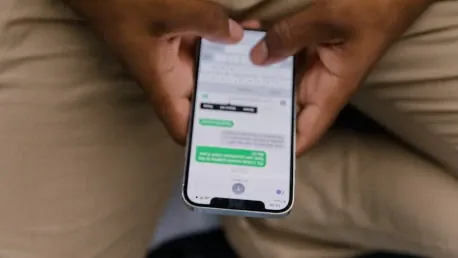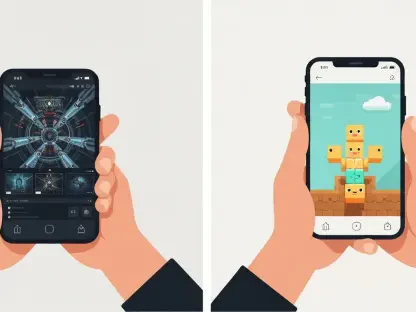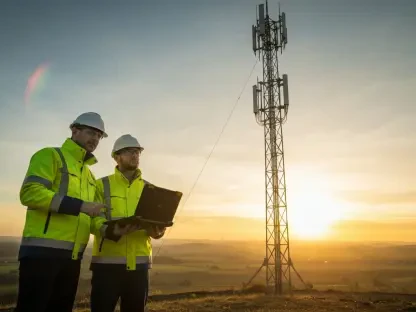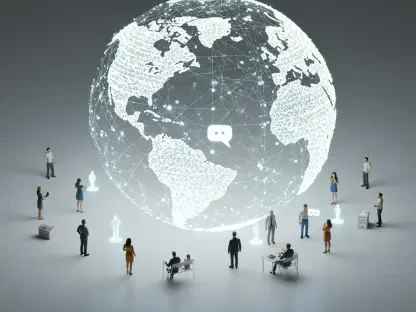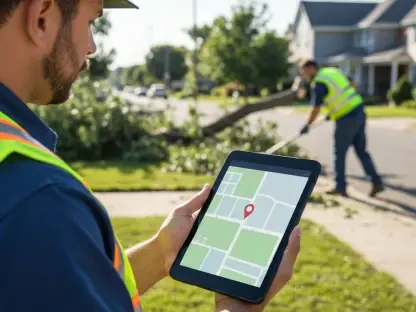Satellite messaging has emerged as a pivotal feature in modern smartphones, increasingly important during emergencies when traditional cellular networks are unavailable. This advanced capability allows users to communicate when they are off the grid, making it indispensable, particularly in natural disaster scenarios. Whether it’s a hurricane disrupting cellular services or venturing into remote areas with limited network coverage, having a reliable means of communication through satellite messaging can be life-saving.
Introduction to Satellite Messaging
In light of recent devastating weather events like Hurricane Milton in Florida, the importance of alternative communication methods is undeniable. Satellite messaging, a breakthrough technology in the smartphone space, serves as a lifeline by ensuring that users can always reach emergency services or contact loved ones when regular networks are down. When cellular and Wi-Fi networks fail during disasters, satellite messaging steps in as a vital backup.
Satellites orbiting above enable this communication method, proving especially valuable in critical moments. Hurricanes, earthquakes, and other natural calamities often disrupt conventional communication infrastructure. Satellite messaging thus bridges this gap, making it possible to send and receive crucial information when it matters most. As the climate crisis exacerbates the frequency and severity of such events, robust emergency communication systems become even more essential.
How Satellite Messaging Works
Satellite messaging requires specific hardware, usually integrated into newer smartphone models. These devices use specialized radios to communicate with satellites orbiting the Earth, enabling messaging capabilities even in the absence of traditional cellular networks. This makes them invaluable during natural disasters or in remote locations with poor network coverage. Functioning as an intermediary, these satellites relay messages between the user’s device and the respective emergency services or contacts.
At its core, the technology shares similarities with satellite phones but is more streamlined and user-friendly for the average consumer. Unlike satellite phones, which require special equipment and often come with high costs, satellite messaging in smartphones leverages existing technology in a more accessible and cost-effective way. Users simply need to ensure their device is compatible and has an unobstructed view of the sky for optimal performance.
Coverage and Regional Availability
One of the essential aspects of satellite messaging is its geographical coverage. Generally, it can be used anywhere under an unobstructed sky within the continental U.S., and for some models, even in select countries outside the U.S. This feature, however, is designed primarily as a backup and is only activated when typical cellular and Wi-Fi networks are unavailable. Intriguingly, the technology presently supports only text-based communications, limiting it to critical uses rather than everyday messaging.
The extent of coverage is a significant factor when considering the purchase of a satellite messaging-enabled device. Consumers need to understand where and how this feature can be utilized, particularly if they frequently travel to remote areas or regions prone to natural disasters. Apple and Google’s models currently lead the market, offering these novel capabilities to ensure that users remain connected under dire circumstances.
iPhone Models with Satellite Messaging Capabilities
Apple has been a frontrunner in integrating satellite messaging into its flagship phones. Models including the iPhone 14, iPhone 15, and iPhone 16 series come equipped with this cutting-edge feature. Running on iOS 18 and later, these devices offer a variety of satellite-enabled services. Emergency SOS connects directly to emergency services when other networks fail, ensuring critical calls for help are always an option. Roadside Assistance is another standout feature, providing support in case of vehicle breakdowns in remote areas.
In terms of location sharing, the Find My service leverages satellite connectivity to offer precise whereabouts, essential during search and rescue operations. Furthermore, users can utilize iMessage and SMS via satellite, enabling text communication when off the grid. Apple includes the Emergency SOS service free for two years after the device’s activation, extending support for iPhone 14 users until September 2025.
Users employ satellite messaging with remarkable ease, often requiring no more than an unobstructed view of the sky and being in a supported country. These capabilities significantly enhance the reliability of communications during emergencies, offering a clear advantage for iPhone users. However, understanding the setup and limitations is crucial for maximizing the feature’s utilization, particularly in unfamiliar or crisis situations.
Setting up Satellite Messaging on iPhones
For users unfamiliar with activating satellite messaging on their iPhones, the process is simple yet crucial. Steps include ensuring iMessage is enabled and communicating with recent message recipients before heading into regions without cellular coverage. Additionally, to send messages to Android users, iMessage should be disabled in Settings to convert texts to SMS. This preparation ensures seamless communication, whether contacting fellow iPhone users or those on different platforms.
Understanding these steps and applying them can make a significant difference in emergency scenarios. By taking a few proactive measures, users can ensure they stay connected, even when conventional communication options are out of reach. Apple’s straightforward approach to enabling satellite messaging reflects its commitment to user accessibility and emergency preparedness, making these features highly practical.
Android Phones Compatible with Satellite Messaging
On the Android side, Google’s Pixel 9 series, encompassing the Pixel 9, Pixel 9 Pro, Pixel 9 Pro XL, and Pixel 9 Pro Fold, supports satellite messaging. Unlike Apple, Google’s feature is currently available only within the continental United States. Their service focuses strongly on Emergency SOS via satellite, paralleling the functionality found in iPhones. For setup, users must have Google Messages as their default messaging app and can initiate the service by dialing 911 and selecting the Satellite SOS option in emergency scenarios.
These capabilities offer a lifeline during emergencies, similar to the advantages provided by iPhones. However, it’s crucial for Pixel users to understand the regional limitations and setup procedures to ensure they can fully utilize these features when needed. Like Apple, Google’s approach highlights the increasing importance of satellite messaging in enhancing emergency communication frameworks.
Emerging Developments in Satellite Messaging
Looking ahead, satellite messaging is set to expand beyond just high-end smartphones. Partnerships like that of T-Mobile and SpaceX are working to bring satellite connectivity to existing phones on T-Mobile’s network using Starlink satellites combined with T-Mobile’s mid-band spectrum. This initiative aims to provide wide coverage with a clear sky view without necessitating new hardware. Through this innovative collaboration, more consumers will have access to satellite messaging capabilities, significantly improving overall emergency preparedness.
The importance of such developments cannot be understated. By broadening the availability of satellite messaging, these partnerships work toward making emergency communication more inclusive and reliable. During Hurricane Milton, T-Mobile and Starlink received FCC approval to operate their Direct-to-Cellular service in affected areas, enabling wireless emergency alerts and SMS to 911 in Florida and regions impacted by Hurricane Helene. This rapid deployment during crises underscores the technology’s potential and the aggressive evolution we can expect in this space.
Real-World Applications and Future Outlook
Satellite messaging has become a crucial feature in today’s smartphones, offering a significant advantage, especially in emergencies where traditional cellular networks fail. This sophisticated technology enables communication when you’re off the grid, making it an invaluable tool in various critical situations.
Imagine facing a natural disaster, such as a hurricane or an earthquake, that disrupts all conventional cellular services. In such scenarios, having the ability to send messages via satellites can be life-saving, allowing you to stay in touch with emergency responders, family, and friends. Moreover, if you’re exploring remote locations, be it mountains or deep forests, where cellular coverage is sparse or nonexistent, satellite messaging provides a reliable means to communicate. This can be crucial for adventurers, hikers, and travelers who often find themselves in places where traditional communication methods don’t reach.
Satellite messaging isn’t just about having a backup when cell service is down; it represents a significant upgrade in how we stay connected, ensuring safety and peace of mind. With this technology integrated into smartphones, users can feel more secure knowing they have a lifeline to the outside world, no matter where they are. In essence, the advent of satellite messaging in modern smartphones bridges the communication gap during emergencies and in remote locales, underscoring its importance in today’s connected yet unpredictable world.
